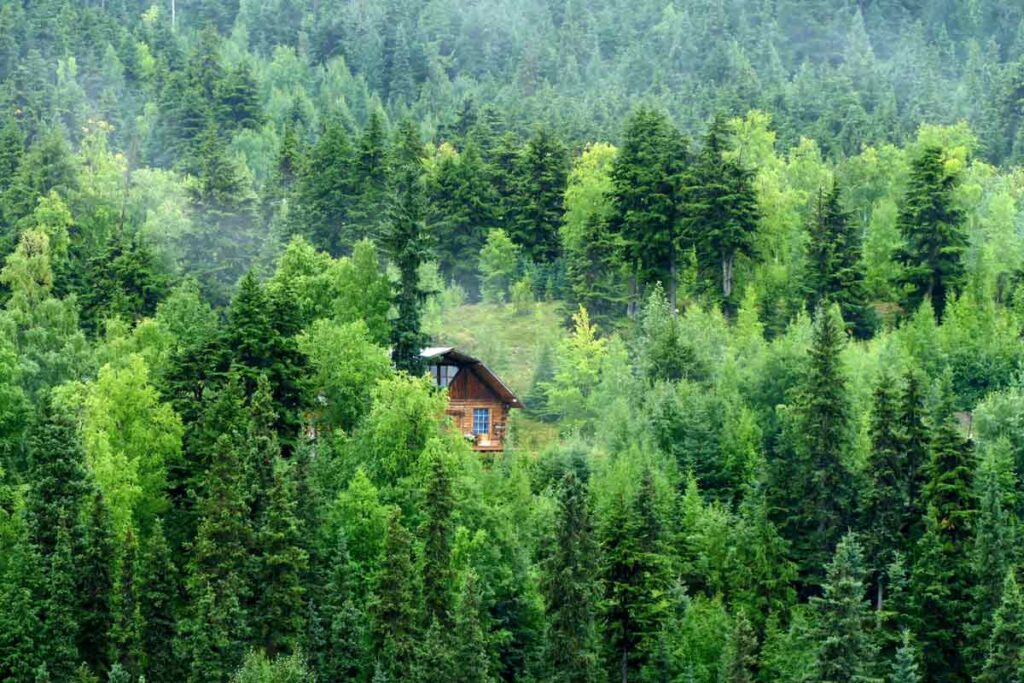Did you know that the number of international tourists has more than doubled over the past two decades? And while the tourism boom prompts personal fulfillment and economic growth, it sometimes comes at the expense of the local communities and environment. In fact, the tourism surge might strain everything from the environment to infrastructure, causing pollution, crowded streets, and habitat loss. Fortunately, as a green traveler, you can be part of the solution to combat the burdens of unsustainable tourism.
Read on and learn about the green travel tips in our guide to travelling sustainably!
Travelling sustainably: What is green travel?
Before going any further, it’s crucial to clarify what we mean by green travel.
While most people often think of it as minimizing our environmental footprint, green travel is much broader and all-encompassing than that. It involves achieving sustainability and a balance between economic growth, environmental health, and human wellbeing. It focuses on reducing tourism’s negative effects while maximizing its positive impacts on cultures, communities, ecosystems, and the earth. That means it accounts for both the immediate effects felt today and longer-term ones that’ll be experienced by future generations.
Travelling sustainably: 7 tips for green vacations
It’s one thing to learn what green travel is and a totally different thing to put it into action. That’s why we’ve compiled the top 7 tips for green vacations. Read and adopt the practices to travel sustainably around the world.
#1 Use efficient modes of transportation
Causing nearly 8% of carbon emissions worldwide, travel and tourism are major contributors to climate change. Also, driving, air travel, and other forms of transportation constitute the largest part of the carbon footprint in tourism. But keep in mind that while all modes of transportation require energy, some are cleaner and more efficient than others. So, how you move from one destination to another makes a difference.
For instance, travelling by train while vacationing in closer destinations can help you soak in the scenery and lower your emissions as well! Once you’ve reached your destination, you can consider taking the bus or cycling around instead of renting a car. But if you do rent a car, consider carpooling and opt for a hybrid, electric, or smaller model.
#2 Conserve energy and water
Besides transportation, tourism relies on energy for lighting and heating. In fact, tourists often consume more energy and water than the locals, and some destinations struggle to keep up with the demand. So, while vacationing, do whatever you can to conserve energy and water resources. For instance:
- Switch off the lights, TV, and other electronics when not in use
- Take showers instead of baths, and keep them short
- Turn off the AC or set the thermostat a few degrees higher when leaving your hotel
- Don’t leave the water running when brushing your teeth
#3 Avoid single-use plastics
Over eight million metric tons of plastic end up in our oceans every year. One of the most common plastic items that tourists use is single-use beverage bottles. In fact, nearly one million plastic beverage bottles are bought every minute worldwide. Luckily, there’s an effective solution: you can bring your reusable bottle on your trip!
Refillable toiletry bottles are another vital green vacations item to add to your packing list. Pack your shampoo, soap, and lotion in reusable bottles – this will prevent many plastic bottles from landing in the trash because of your trip.
#4 Opt for eco-friendly sustainable accommodations
In the past, hotels’ main aim was to attract more guests regardless of the cost to nature. Today, many companies are becoming more aware of their surroundings and are embracing sustainable travel. But some still don’t see the value.
As a green traveler, you can lower your environmental footprint by putting your money where your mouth is. That means a low-impact accommodation- it could be a small, more basic accommodation or a high-end one utilizing renewable, efficient technologies. Keep in mind that simply because a hotel market itself as “sustainable” or “green” doesn’t necessarily mean they are. So, research specific “green” practices and policies that they’re implementing.
#5 Choose green activities
With many beautiful resorts located near the oceans or scenic nature parks and trails, there are several earth-friendly activities you can indulge in. Ideally, you should choose experiences that have a low environmental footprint. For instance, instead of Jet Skiing, you can consider doing green activities like kayaking, snorkeling, biking, hiking, and paddleboarding.
And as the saying goes, “take nothing but pictures, and leave nothing but footprints.” So, while hiking, stay on hiking trails to keep ecosystems well-preserved, and when snorkeling or exploring oceans, leave flora and fauna untouched.
Pro Tip: Green vacations don’t necessarily mean you severely restrict what you do. You can enlist the expertise of a green adventure company that combines environmental preservation and thrilling experiences.
#6 Get off beaten paths
Many popular destinations are literally being loved to death as they become victims of their own popularity. In fact, according to the World Economic Forum, nearly 80% of tourists will visit the same 5-10 spots in a country. That means during the peak seasons, popular destinations, including beaches and historic cities can experience over 70% population increase, causing over-tourism.
As a green traveler, you can help prevent over-tourism by skipping tourist traps and getting off beaten paths. That allows you to enjoy a more authentic and unique experience while avoiding the crowds. But that doesn’t mean you pitch a tent in the middle of nowhere. Do your research; ask locals and other travelers for recommendations- this will ease the burden on over-visited destinations.
Pro Tip: If you do decide to go to a popular destination, consider touring it during the off-season.
#7 Offset your carbon footprint
Although you should do whatever you can to lower your environmental footprint, some carbon emissions like the airline industry will remain unavoidable. You could compensate for these inevitable emissions through carbon offsetting. Carbon offsetting entails donating money to environmental projects to make up for your carbon output. These environmental projects can include preventing tropical rainforest deforestation, converting cow manure into energy, or building a wind farm. Besides emissions reductions, these projects can also help create local jobs, enhance sanitation, and conserve endangered species.
The takeaway: Travel sustainably and make your vacation green!
We still have a long way to go in terms of travelling sustainably. However, there are excellent ways we can keep the places we love vacationing beautiful and rich with flora and fauna. Use these tips to ensure your impact is more positive for the environment and add a whole new level of value and purpose to your travels!
Up next…







Comments are closed.